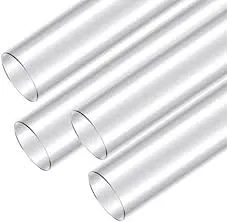Oktoba . 17, 2024 10:06 Back to list
hdpe culvert pipe
Understanding HDPE Culvert Pipe Benefits and Applications
High-Density Polyethylene (HDPE) culvert pipe is gaining popularity in various civil engineering and construction projects due to its remarkable properties and advantages. This article delves into the features, benefits, and applications of HDPE culvert pipes, showcasing why they are becoming the preferred choice for many infrastructure projects.
What is HDPE?
HDPE, or High-Density Polyethylene, is a type of thermoplastic polymer made from petroleum. It is characterized by its high strength-to-density ratio, making it an ideal material for various applications, including pipes, containers, and plastic lumber. HDPE is resistant to many solvents and chemicals, is low in moisture absorption, and can withstand extreme weather conditions, making it a durable option for long-term use.
Advantages of HDPE Culvert Pipe
1. Durability and Longevity One of the most significant benefits of HDPE culvert pipes is their exceptional durability. They are resistant to corrosion, abrasion, and chemical attack, which significantly extends their lifespan compared to traditional materials like concrete and steel. HDPE pipes can last over 50 years with proper installation and maintenance.
2. Lightweight and Easy to Handle HDPE culvert pipes are much lighter than other materials, making them easier to transport and install. This characteristic reduces labor costs and time during installation, contributing to overall project efficiency.
3. Flexibility The flexibility of HDPE allows it to withstand ground movements and settle without breaking. This is particularly advantageous in areas prone to seismic activity or soil shifts.
4. Cost-Effectiveness While the initial cost of HDPE culvert pipes may be higher than some traditional materials, their longevity and reduced maintenance requirements lead to lower lifecycle costs. Additionally, because they are lightweight, the costs associated with transportation and installation are lower.
5. Environmental Impact HDPE is recyclable, making it an environmentally friendly option. Moreover, the production of HDPE pipes has a lower carbon footprint compared to traditional materials, appealing to environmentally conscious projects.
hdpe culvert pipe

6. Hydraulic Performance HDPE culvert pipes have a smooth interior surface, which minimizes friction and enhances hydraulic performance. This allows for efficient flow of water, reducing the risk of clogs and backups, which is critical in managing stormwater and drainage systems.
Applications of HDPE Culvert Pipe
HDPE culvert pipes are utilized in various applications across multiple industries
1. Transportation Used for drainage systems in roads, highways, and railways, HDPE culverts help ensure that water is efficiently managed, reducing erosion and road damage.
2. Agriculture Farmers use HDPE culvert pipes for irrigation and drainage systems, promoting efficient water management and reducing soil erosion in agricultural lands.
3. Stormwater Management These pipes play a vital role in stormwater management systems, helping to control runoff and prevent flooding in urban environments.
4. Utility Services HDPE pipes are also employed for carrying utilities such as telecommunications and gas, thanks to their resistance to corrosion and flexibility.
5. Environmental Restoration In projects aimed at restoring wetlands and managing natural water resources, HDPE culverts can be essential in maintaining water flow and protecting ecosystems.
Conclusion
HDPE culvert pipes represent a significant advancement in materials for infrastructure and environmental management. Their durability, lightweight nature, flexibility, and cost-effectiveness make them a superior choice for various applications, from transportation to agricultural practices. As infrastructure demands evolve, the adoption of HDPE culvert pipes is likely to increase, paving the way for more sustainable and efficient construction practices that support both economic growth and environmental stewardship. The future of civil engineering can undoubtedly benefit from incorporating HDPE solutions into its framework, positioning this material as a cornerstone of modern infrastructure projects.
-
Durable PP Rigid Sheet: Versatile & High-Quality Plastic Panels
NewsAug.08,2025
-
Premium Glossy PP Rigid Sheet – Durable & Versatile
NewsAug.07,2025
-
High-Quality HDPE Sheet | Durable Plastic Panels
NewsAug.06,2025
-
High-Precision PVC Rigid Sheets for Vacuum Forming | AI-Optimized
NewsAug.05,2025
-
Durable PVC-M Water Supply Pipes | 60-Year Life
NewsAug.04,2025
-
Premium HDPE Water Supply Pipes: Durable & Leak-Proof
NewsAug.03,2025

